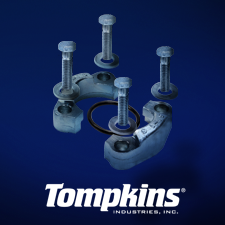Talent Matters
Delivering the right package.
by Bharani Nagarathnam
There are 7.1 million open jobs today in the U.S. (JOLTS, May 2025). Unemployment is at 4.2%, a historic low. Meanwhile, the average U.S. pay is projected to increase by 3.5% in 2025 (SHRM). At least 21 states increased their minimum wages on January 1, and many cities and counties are also increasing their minimum wage rates, sometimes surpassing the state minimum wage. In addition, the growing trend of pay transparency laws and websites is making salary data more accessible.
Against this backdrop, to say distributors and manufacturers are struggling to attract talent is an understatement. Competitive salary and benefits are an important part of attracting and retaining talent. Benchmarking and communicating compensation and benefits to next-gen talent is an important part of recruiting and retention.
ARE YOU COMPETITIVE?
You can’t say that your salary is competitive and not display the salary range in the job description. “Competitive” is very subjective. Do you mean you’re competitive in your industry, your geography, or in the job function? The first step to see if you are competitive is to conduct salary benchmarking. Use sources within your industry as well as public and geographic data to benchmark at least once a year. Engage in compensation reviews using sources comparable to your industry and geography. Many industry associations provide salary benchmarking data as do public companies like ADP, PayScale, and Mercer.
KEEPING UP WITH PAY INCREASES
Wage acceleration during the pandemic led to companies struggling to benchmark and set up competitive pay scales. While we have reached a stable labor market, annual wage increases are trending higher. To manage your pay structure and fairness, create a compensation framework using pay bands. Create, manage, and adjust pay bands tied to job, families, skills, experience, and geography. This provides a good compensation framework when you hire and promote employees. Adjust your salaries (merit and equity), especially at entry-level and hourly positions yearly to be competitive. Remember, even with the pay increases, the real purchasing power of employees has decreased due to inflation.
A common challenge is hiring someone today at or above the salary of an employee you hired in the last year or two in a similar role because the market wages have increased. This can create equity issues for your experienced employees who contribute at a higher level.
EVOLUTION OF SALES COMPENSATION
I have not met a distributor where both the company and salespeople love their sales compensation model. Sales compensation has evolved from a simple percentage of gross profit to complex models that include incentives for new accounts, cross-selling, SPIFs for new product lines, and selling services and subscriptions. Many distributors have introduced smaller incentives for inside sales teams. Some also have a team selling incentive model for projects and complex long-cycle sales. This is on top of the territory design and industry specialization complexities. I see a trend with larger base pay and smaller incentives for salespeople. An all-commission model seems to be less attractive to the younger generation of talent. There is no one size fits all. Design an incentive system that is simple, easy-to-understand, and aligns with your business priorities and goals.
TOTAL COMPENSATION
While salary and incentives are a big part of total compensation, the benefits are where you can differentiate and stand out. Benefits include insurance, retirement plan contributions, paid time-off, and other perks. If you are a public company with stock options or ESOP, then highlight the benefit and educate your employees and prospective employees, especially the entry-level people. Most college graduates don’t fully comprehend the value of benefits, and not all employees are looking for the same benefits. Different generations have different needs and wants. Poll your employees. Compare your benefits to the market, including B2C companies. Try differentiating yourself by offering pet insurance, for example. I’ve also seen companies offer educational loan assistance for as long the person works for them. What a great retention hook.
COMMUNICATE IT
A key part of using your great total compensation package to attract and retain top talent is to market and communicate it to current and prospective employees. Different generations and learner types would receive information differently. Add detailed benefits website links to your job postings. Use signage and printed materials. Use smaller doses of information. Communicate the benefits throughout the year – not just during the sign-up period. This will enable employees and prospective employees to see your company as a great place to work.
Compensation and benefits is one of the areas to improve to become a talent magnet. Remember, talent chooses you, not the other way around.

Dr. Bharani Nagarathnam is an associate professor and director of the Master of Industrial Distribution at the Industrial Distribution Program at Texas A&M University. He is the co-founder of the school's Talent Development Council and works with distributors on talent acquisition, management, development, and retention practices. Connect with him at: https://www.linkedin.com/in/bharanin/
This article originally appeared in the July/August 2025 issue of Industrial Supply magazine. Copyright 2025, Direct Business Media.












